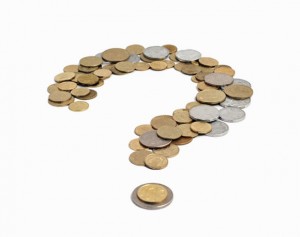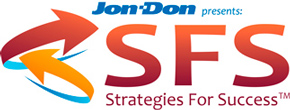In my last Instructor’s Blog post we examined the first two of the three main pricing models for the residential carpet cleaning industry- a) Pricing by the room and b) square-foot pricing.
 However, the third method, “package pricing” normally will be your most profitable residential cleaning pricing method BUT it will also be more time consuming to implement.
However, the third method, “package pricing” normally will be your most profitable residential cleaning pricing method BUT it will also be more time consuming to implement.
Package pricing will especially be more difficult to sell over the phone due to the choices and complexity in your offer. It also can be a challenge with a customer who has been conditioned to view carpet cleaning as a “commodity”. (This is due to constantly seeing coupons with a super low room price!) So if you are not using Steve Toburen’s phone script you may lose a lot of phone calls.
Our industry has popularized naming the different pricing packages Silver, Gold, and Platinum. Unfortunately this leads to the idea that each package costs more than the previous. While this is true I prefer to give the packages a more descriptive, less price focused name such as Healthy Home Package and then list what they get in the package.
NOTE: This detailed listing of the benefits in each package has proven to be very important in many other industries, not just for carpet cleaners.
For example, when the Apple iPhone bills came out they listed each data transaction at 0.00 cents even though there were going to be thousands of these transactions. The idea is the customer feels better seeing all of these items in their package. It helps them justify the plan they signed up for.
So if you run an acid rinse in your solution tank list it as a “neutralizing rinse”. This is a classic example of “selling the sizzle, not the steak”. The more you list such things as edge vacuuming or a complimentary bottle of “Free Spotter for Life” spotter etc the more “perceived value” for your prospective customer.
Numerous studies have been run on pricing and persuading the customer. For a very thorough study of pricing read Priceless by William Poundstone. I will warn you that this book is a very academic read. If like me you lack the mind of an economist, expect to occasionally get lost in the book!
The term that is used to describe the science behind package pricing is “anchoring”. Here is the Wikipedia definition:
“Anchoring and adjustment is a psychological heuristic that influences the way people intuitively assess probabilities. According to this heuristic, people start with an implicitly suggested reference point (the “anchor”) and make adjustments to it to reach their estimate.”
So the evaluation/buying process begins with a first “approximation” (anchor) and then the prospect makes “adjustments” to that number based on additional information. The best example used in several books is Sonoma-Williams. They were selling a bread maker for $279.00 but its sales were terrible. They then came out with a new, larger and more deluxe bread maker for $429.00. They sold very few of the expensive ones but sales of the cheaper one skyrocketed! Go figure!
Every study shows that if you have 3 price points most people choose the middle one. This has been proved true everywhere from McDonalds hamburgers to Prada handbags. If you offer the three choices of a “small, medium, large” or “good, better, best” most will pick the middle package.
So obviously you should try to make your middle package the most profitable offering. The more items you include, Scotchgard, deodorizers, etc. the more profitable it will be. Do not offer more than four choices (three is better) because if the customer has too many options they will not choose any.
Setting your prices will always be a thorny subject. But hopefully after digesting Parts I and II of this Pricing series you now understand why a multi-truck company chooses room pricing versus package pricing. Room pricing is quick, efficient and for a large, multi-truck company model very profitable. For the solo operator he or she needs to override the customer’s “mental anchor” of 3 rooms and a hall costing 99.00. This can only be done by showing all of the steps that his or her service provides. (Adjustment.)
So if you quote a top package that may cost .79 a square foot then the .59 looks very good. Seldom will a customer pick the least expensive package unless they are moving. (The number one priority that almost all of our Strategies for Success graduates list first when leaving SFS is to raise their prices overall! And then they write and say, “Thank you!”)
However, pricing is an area that cannot be addressed until you have decided on a model (and image) for your company. Even so, ultimately you have to know if you are making a profit. If you don’t know (don’t feel bad-most carpet cleaners don’t have a clue on if they are making money!) go back to square one OR sign up for the next SFS: Business Transformation class and listen very closely to Chuck Violand!
Now I wonder what that price-opinionated Steve Toburen will have to say about my musings? Hmmmm …

Great article, Bill. I would love to know your thoughts on price point increasements from package to package.
For example, should the price increase between “bronze” and “silver” be proportionate to the increase from “silver” to “gold?”
Thank you in advance!
-Robert
Robert good question. I think dependent on what you are adding to the next package will determine the amount. So in other words if you are adding true deodorization (urine) may cost you more than adding Scotchgard.
I would always want Scotchgard in my middle package because everyone benefits from Scotchgard but not everyone needs odor removal.
The nice part about deodorization is that you can price the package separately for each room as the cat may have a litter box in a back bedroom but the other rooms are fine.
If I was suggesting a price I would go 35 for entry level package, second package with Scotchgard would be 47 and third package with deodorization and Scotchgard would be 59. Your area may be different.
The deodorization may increase further dependent on the difficulty. If it involves pulling the carpet back or replacing pad you will have to price this at a higher cost.
If this doesn’t answer your question please let me know and I will answer again.
Thanks for your clarification, Bill!
Robert, we now recommend in our different SFS seminars to offer your highest priced package first… and then shut up! (It is amazing how many people will reply “OK”!)
Simply put- it is much easier to “come down” instead of “go up”. Try it on your next pre-inspection!
Awesome, thank you both very much! Bill, I’m sorry I didn’t see this post until now otherwise I would not have bugged you on Facebook. Everything you said makes a lot of sense, we would certainly price level 2 and level 3 odor treatment (Water Claw, and carpet untacking, respectfully) separate from “deodorizer” or “level 1” pet odor treatment. I guess the part that surprises me is that Scotchgard would only be $0.12/sq. ft.
We switched over to package pricing about 2 years ago after SFS and it has worked pretty well. The problem is, we complicated the differences between each package and made it challenging for the customer to understand the differences quickly.
Our new packages will offer pretty much what you explained here:
-clean
-clean & protect
-clean, protect, and deodorize
Trying to keep things nice and simple for the customer.